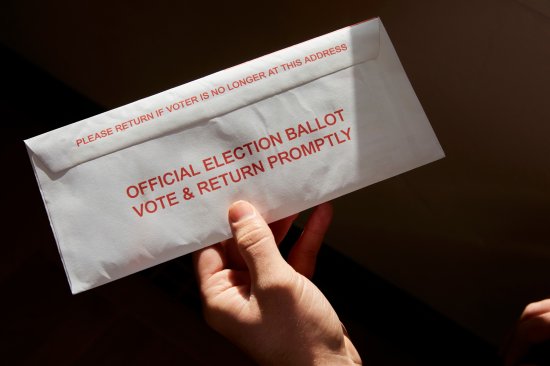
Here’s everything you need to know about early voting, from the benefits to when you can start.
With Election Day approaching, many voters are beginning to make a plan for how and when they will vote. While some might choose to head to the polls on Nov. 5, other voters across the country will cast their ballots earlier—some as soon as Sept. 6.
The process for early voting varies by state—and by whether you plan to vote in person or by mail. Forty-seven states, the District of Columbia, Guam, Puerto Rico, and the Virgin Islands offer early in-person voting, according to the National Conference of State Legislatures. Alabama, Mississippi, and New Hampshire do not offer early in-person voting.
[time-brightcove not-tgx=”true”]Here’s what to know about how early voting works.
What are the benefits of early voting?
Early voting has made election participation more accessible by helping voters avoid long lines, and providing more flexibility for those who might not be able to head to their polling place on Election Day.
In the 2020 election, 22% of voters voted in person before Election Day, while 45% of voters said they cast their ballots by absentee or mail-in ballot, according to Pew Research Center.
But early voting can look different depending on which state you live in, says Casey Burgat, director of the Legislative Affairs Program at George Washington University. “We just say ‘early’ as this catch-all term, but sometimes it’s months in advance, sometimes it’s a few weeks, and then [there are] even the differences in [state] processes.”
When can I start early voting?
Voters in North Carolina are the first to receive their absentee ballots in early September—two months before election day. Several other states also open early voting in September including Alabama (Sept. 11), Kentucky (Sept. 16), Pennsylvania (Sept. 16), Wisconsin (Sept. 19), Arkansas (Sept. 20), Minnesota (Sept. 20), New York (Sept. 20), South Dakota (Sept. 20), Virginia (Sept. 20), West Virginia (Sept. 20), Idaho (Sept. 21), Louisiana (Sept. 21), New Jersey (Sept. 21), Texas (Sept. 21), Maryland (Sept. 23), Mississippi (Sept. 23), Vermont (Sept. 23), Missouri (Sept. 24), Florida (Sept. 26), Illinois (Sept. 26), Michigan (Sept. 26), North Dakota (Sept. 26), District of Columbia (Sept. 30), and Nebraska (Sept. 30).
Other states will begin the process in October: Connecticut (Oct. 4), Maine (Oct. 6), Massachusetts (Oct. 6), New Hampshire (Oct. 6), South Carolina (Oct. 6), California (Oct. 7), Georgia (Oct. 7), Ohio (Oct. 7), New Mexico (Oct. 8), Wyoming (Oct. 8), Arizona (Oct. 9), Alaska (Oct. 11), Colorado (Oct. 11), Montana (Oct. 11), Utah (Oct. 15), Iowa (Oct. 16), Kansas (Oct. 16), Nevada (Oct. 16), Oregon (Oct. 16), Hawaii (Oct. 18), Washington (Oct. 18).
Early voting begins and ends at different times depending on your state, but the average state’s early voting period is 20 days long. Check with your local election office—which you can find here— to determine the rules where you live.

Why did early voting start?
Early voting is a tradition that dates back to the Civil War, says Burgat. “[Soldiers] wanted to make sure that they had access to a ballot, even if they were not in their home districts, near their precincts, or even in their home states,” says Burgat.
But the practice didn’t gain widespread traction until the late 21st century, as states were hoping to increase voter turnout, says Burgat. In the 1980s, California became the first state to allow eligible voters to request absentee ballots for any reason. As of 2023, 28 states and the District of Columbia adopted no-excuse absentee laws, according to the MIT Election Lab.
Should I vote early or absentee?
Whether you vote early or absentee depends on your personal circumstances. Early voting allows voters to submit their ballots at an earlier time, whether in person or by mail.
On the other hand, to vote absentee, many states require you to provide a reason for your request–– such as being unable to get to your polling place due to illness, injury, or disability, if you are traveling on Election Day, or are a student or military personnel located in a different state.
Rules vary by state on whether voters automatically receive a mail-in ballot or whether they need to provide an excuse or request one.
What has USPS said about early voting?
In a House Appropriations Committee hearing on Sept. 26, Postmaster General Louis DeJoy urged voters to mail their ballots out early—at least a week before Election Day. “That’s the key to everyone’s success,” he said.
DeJoy said that the U.S. Postal Service (USPS) is ready to handle the demands voting by mail might place on the system. “Our network is designed to readily handle a surge in mail in volume, just like we do every election and holiday season,” he said. “Even in 2020, the historically high number of ballots accounted for just 0.1% of the Postal Service’s total mail volume that year.”
DeJoy said USPS typically employs “extraordinary measures” to ensure ballots move quickly in the days preceding Election Day, with workers often sorting through mail each day to pull ballots and expedite them through the system.